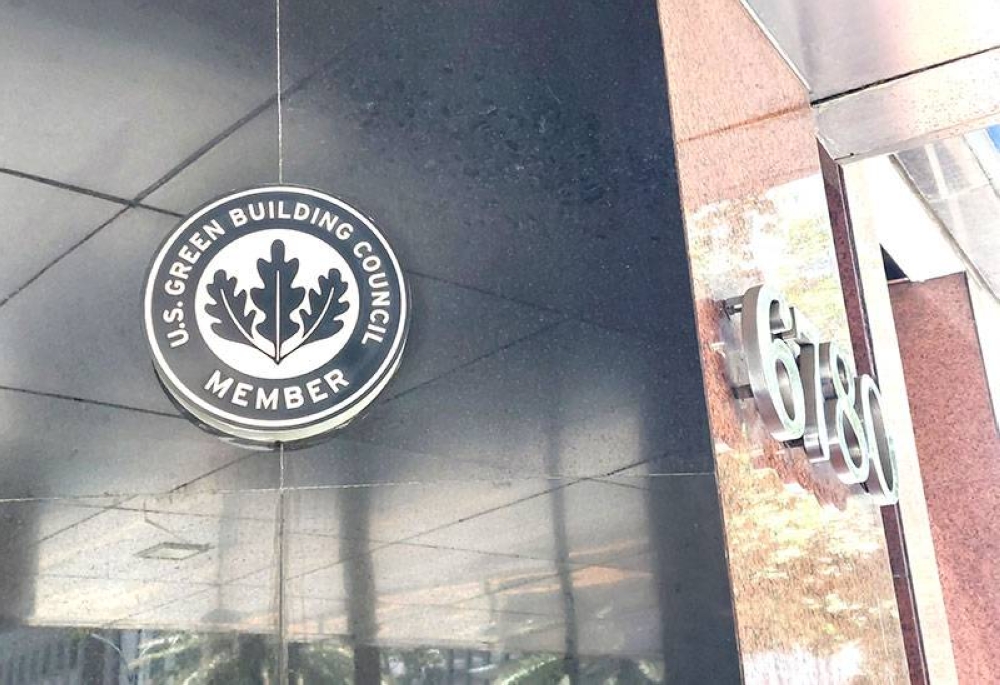Several buildings in Bonifacio Global City in Taguig have obtained LEED (Leadership in Engineering and Environmental Design) certification.
IF you are to walk along the central business districts of Metro Manila like Makati or Bonifacio Global City, you might notice some buildings that display a unique plaque or signage in front that bears the words, “US Green Building Council” and a leaf. If you see such a building, this means it is LEED (Leadership in Engineering and Environmental Design) certified.
This further means it has met a higher standard of sustainable design.
What is LEED?
LEED is a building certification program developed by the US Green Building Council (hence the name on the plaques) in 1993. Its goal is to help building owners and operators to become environmentally responsible and use resources efficiently. It provides a framework for healthy, highly efficient and cost-saving buildings.
LEED includes a set of rating systems for the design, construction, operation and maintenance of not only green buildings, but also extends to homes and neighborhoods.
Get the latest news
delivered to your inbox
Sign up for The Manila Times’ daily newsletters
By signing up with an email address, I acknowledge that I have read and agree to the Terms of Service and Privacy Policy.
One thing to take into consideration is that LEED is more of a design tool than a performance-measurement tool and focuses on energy modeling rather than actual energy consumption.
This certification is granted by the Green Building Certification Institute. What it does is it arranges third-party verification if a project successfully meets LEED requirements. The certification process for design teams consists of the design application, overseen by the architect and the engineer, and documented in the official construction drawings. This also includes the construction application, which is supervised by the building contractor and documented during the construction and commissioning of the building.
Certification
For a building to be LEED certified, the process can be complex as it involves standards and guidelines that involve detailed documentation and mathematical calculations that is used in a point system categorized in five areas — sustainable sites, water efficiency, energy and atmosphere, materials and resources; and indoor environmental quality.
The corresponding points will provide a certification divided into four levels based on the level of sustainable strategies that are achieved — from basic sustainable design to a framework that consumes the least amount of energy possible.
The more points achieved, the higher the level of LEED certification. These are: LEED certified — 40-49 points; silver — 50-59 points; gold — 60-70 points; and platinum — 80 points and higher.
What does it mean to be LEED certified?

Buildings displaying this plaque is a sign that it is LEED (Leadership in Engineering and Environmental Design) certified, which means it has complied with standards on sustainability. The photo taken is a building along Ayala Avenue in Makati City.
It helps bring down costs. Since buildings are energy-efficient, they can be heated or cooled with minimal energy usage.
It promotes good well-being. LEED-certified buildings are designed to maximize the quality of indoor air and minimize exposure to pollutants that may be detrimental to our health. Measures such as proper ventilation and high-efficiency air filters are essential to reduce mold and mildew that can produce these harmful pollutants.
Good for the environment. LEED-certified buildings have an overall positive impact on the environment. These reduce dependence on conventional energy by using alternative sources such as solar, wind, geothermal and biomass.
LEED in the Philippines
The Philippine construction industry has joined the LEED bandwagon after realizing the need to be environmentally aware and responsible.
There are many buildings that have met these standards and achieved LEED certification. Among them are Arya Residences, Citi Plaza, Unilever Bayanihan Project, Bench Tower and Wells Fargo Center in Taguig City (Bonifacio Global City), and Zuellig Building in Makati City. Outside Metro Manila, there are the Olongapo City branch of Union Bank and Pioneer House in Cagayan de Oro City.
The above-listed buildings are just some of those that have attained LEED certification. It will not be long until more and more buildings in the Philippines will want to obtain LEED certification because sustainability is the wave of the future.
[ad_2]
Originally Appeared Here